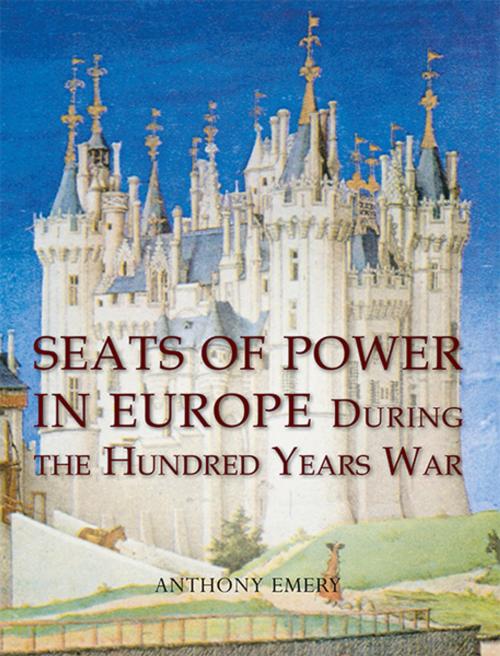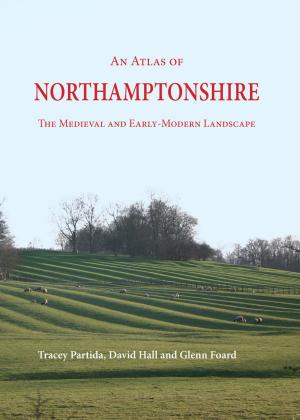Seats of Power in Europe during the Hundred Years War
An Architectural Study from 1330 to 1480
Nonfiction, Social & Cultural Studies, Social Science, Archaeology, History, Medieval, European General| Author: | Anthony Emery | ISBN: | 9781785701047 |
| Publisher: | Oxbow Books | Publication: | December 31, 2015 |
| Imprint: | Oxbow Books | Language: | English |
| Author: | Anthony Emery |
| ISBN: | 9781785701047 |
| Publisher: | Oxbow Books |
| Publication: | December 31, 2015 |
| Imprint: | Oxbow Books |
| Language: | English |
The Hundred Years’ War between England and France is a story of an epic conflict between two nations whose destinies became inextricably entwined throughout the later Middle Ages. During that time the balance of architectural power moved from religious to secular domination, the Gothic form continued to grow and the palace-fortress was in the ascendancy. Seats of Power in Europe is a major new study of the residences of the crowned heads and the royal ducal families of the countries involved in the Hundred Years’ War. Though they were the leading protagonists and therefore responsible for the course of the war, do their residences reflect an entirely defensive purpose, a social function, or the personality of their builders? As well as the castles of England and France it also looks at rulers residences in other European countries who supported one of the protagonists. They include Scotland, Castile, Aragon, Navarre, Portugal, the Low Countries, the imperial territories of Bohemia, and the papacy in Avignon and then Rome.
The study concentrates on sixty properties extending from the castles at Windsor and Denilworth to those at Saumur and Rambures, and from the palaces at Avignon and Seville to the manor-houses at Germolles and Launay. A number of subsidiary or associated properties are also considered in more broad-based sections. Each region and its residences are prefaced by supporting historical and architectural surveys to help position the properties against the contemporary military, financial, and aesthetic backgrounds.
Extensively illustrated in full color with over 120 photographs and over 70 plans this is an attractive and accessible overview of how architecture both shaped and was influenced by events during this tumultuous period in the history of Europe. Essential reading for students of architecture, architectural historians, historians and those interested in Medieval Europe.
The Hundred Years’ War between England and France is a story of an epic conflict between two nations whose destinies became inextricably entwined throughout the later Middle Ages. During that time the balance of architectural power moved from religious to secular domination, the Gothic form continued to grow and the palace-fortress was in the ascendancy. Seats of Power in Europe is a major new study of the residences of the crowned heads and the royal ducal families of the countries involved in the Hundred Years’ War. Though they were the leading protagonists and therefore responsible for the course of the war, do their residences reflect an entirely defensive purpose, a social function, or the personality of their builders? As well as the castles of England and France it also looks at rulers residences in other European countries who supported one of the protagonists. They include Scotland, Castile, Aragon, Navarre, Portugal, the Low Countries, the imperial territories of Bohemia, and the papacy in Avignon and then Rome.
The study concentrates on sixty properties extending from the castles at Windsor and Denilworth to those at Saumur and Rambures, and from the palaces at Avignon and Seville to the manor-houses at Germolles and Launay. A number of subsidiary or associated properties are also considered in more broad-based sections. Each region and its residences are prefaced by supporting historical and architectural surveys to help position the properties against the contemporary military, financial, and aesthetic backgrounds.
Extensively illustrated in full color with over 120 photographs and over 70 plans this is an attractive and accessible overview of how architecture both shaped and was influenced by events during this tumultuous period in the history of Europe. Essential reading for students of architecture, architectural historians, historians and those interested in Medieval Europe.
The Hundred Years’ War between England and France is a story of an epic conflict between two nations whose destinies became inextricably entwined throughout the later Middle Ages. During that time the balance of architectural power moved from religious to secular domination, the Gothic form continued to grow and the palace-fortress was in the ascendancy. Seats of Power in Europe is a major new study of the residences of the crowned heads and the royal ducal families of the countries involved in the Hundred Years’ War. Though they were the leading protagonists and therefore responsible for the course of the war, do their residences reflect an entirely defensive purpose, a social function, or the personality of their builders? As well as the castles of England and France it also looks at rulers residences in other European countries who supported one of the protagonists. They include Scotland, Castile, Aragon, Navarre, Portugal, the Low Countries, the imperial territories of Bohemia, and the papacy in Avignon and then Rome.
The study concentrates on sixty properties extending from the castles at Windsor and Denilworth to those at Saumur and Rambures, and from the palaces at Avignon and Seville to the manor-houses at Germolles and Launay. A number of subsidiary or associated properties are also considered in more broad-based sections. Each region and its residences are prefaced by supporting historical and architectural surveys to help position the properties against the contemporary military, financial, and aesthetic backgrounds.
Extensively illustrated in full color with over 120 photographs and over 70 plans this is an attractive and accessible overview of how architecture both shaped and was influenced by events during this tumultuous period in the history of Europe. Essential reading for students of architecture, architectural historians, historians and those interested in Medieval Europe.
The Hundred Years’ War between England and France is a story of an epic conflict between two nations whose destinies became inextricably entwined throughout the later Middle Ages. During that time the balance of architectural power moved from religious to secular domination, the Gothic form continued to grow and the palace-fortress was in the ascendancy. Seats of Power in Europe is a major new study of the residences of the crowned heads and the royal ducal families of the countries involved in the Hundred Years’ War. Though they were the leading protagonists and therefore responsible for the course of the war, do their residences reflect an entirely defensive purpose, a social function, or the personality of their builders? As well as the castles of England and France it also looks at rulers residences in other European countries who supported one of the protagonists. They include Scotland, Castile, Aragon, Navarre, Portugal, the Low Countries, the imperial territories of Bohemia, and the papacy in Avignon and then Rome.
The study concentrates on sixty properties extending from the castles at Windsor and Denilworth to those at Saumur and Rambures, and from the palaces at Avignon and Seville to the manor-houses at Germolles and Launay. A number of subsidiary or associated properties are also considered in more broad-based sections. Each region and its residences are prefaced by supporting historical and architectural surveys to help position the properties against the contemporary military, financial, and aesthetic backgrounds.
Extensively illustrated in full color with over 120 photographs and over 70 plans this is an attractive and accessible overview of how architecture both shaped and was influenced by events during this tumultuous period in the history of Europe. Essential reading for students of architecture, architectural historians, historians and those interested in Medieval Europe.















